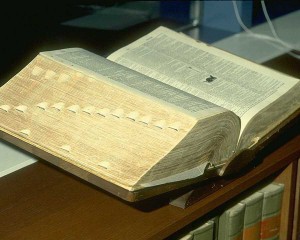 Motif Index: What it is and what it does.
Motif Index: What it is and what it does.
Throughout issues of B.C.Folklore many folktales and beliefs have been followed by odd-looking letters and numbers with references made to the Motif Index. These references may not have meant very much to some readers. Consequently we thought we might republish an article [edited 2008] that first appeared in BCF [BCF 12, pp.3–11] explaining what the Motif Index is all about, together with a list of suggested additions to the Motif Index that we have developed during this time.
In order to compare folk tales, and understand their distribution, they are classified by an indexed system called the Types of the Folk Tale. Generally tales are made up of a number of specific elements in order to make them work as tellable tales. These elements are known as motifs. To be accepted as a motif the element needs to be an identifiable unit of the tale’s makeup or character and, by giving it a number within an alphabetical system, one can quickly access and compare similar motifs, in other tales, seeing where they occur and how common they are. Describing comparative examples of specific elements within a tale, the Standard Dictionary of Folklore says:
“It must be more than commonplace. A mother as such is not a motif. A cruel mother becomes one because she is at least thought to be unusual. The ordinary processes of life are not motifs. To say that ‘John dressed and walked to town’ is not to give a single motif worth remembering; but to say that the hero put on his cap of invisibility, mounted his magic carpet, and went to the land east of the sun and west of the moon is to include at least four motifs – the cap [D1067.2,] [D1361.15,], the carpet [D1155,], the magic air journey [D2120,], and the marvelous land [F771.3.2,]. Each of these motifs lives on because it has been found satisfying by generations of tale-tellers.1
Before such a complex system can work, a huge number of tales must be read, analysed, and, together with details of their source, be entered, piece by piece, into the index. To give some idea of the size of the basic Motif Index, the largest single volume of the six-volume set is the 893-page index to the Index.
This is the essence of the Motif Index, but folklore is not a static science, and newly found tales, and variations of existing tales, are continually being unearthed, and these often include previously unrecorded motifs. With so much work having already been done in compiling the basic Index, it is generally possible to suggest a new number be assigned to a previously unrecorded motif, closely based on a motif that already exists. Additions to the already published system, therefore, are cited by people who are aware of the system and who think they may have discovered an aspect of a tale previously not documented, not documented from that area, or varying sufficiently from another established index number to warrant its recognition. These numbers usually either have the word ‘suggested’ in brackets after them, or are indicated by a section mark (§) [the section mark, now in common use, has replaced the asterisk found in older indexes], usually with a note before the list of numbers, to the same effect. These newly suggested numbers pretty well remain in this state of suspended animation until they become accepted, changed slightly, or dismissed, by a properly recognised, often established by publication by a responsible, publisher of folklore such as the Folklore Fellows, at the Finnish Academy of Sciences in Helsinki, or Indiana University Press. For that to happen, however, it is necessary for any such committee and publisher to be aware of what additional motifs are being submitted to the science, and therefore the importance of networking within the fellowship of folklore should be readily apparent.
Further, a plus sign (+) after a number indicates the approximate location of a number relating to a suggested motif. And a double dagger (‡) before the description tells the reader that a previous designation had been adjusted in favour of this new number.
Finally, all the numbers end with a comma [previously a full stop] before its explanation or when it is included in a sentence, unless it occurs at the end of a sentence, e.g. D413.2.
Many of the newly accepted rules for number design have been established by one of today’s leading scholar in motif indexing, Hasan El–Shamy, Professor of Folklore, Indiana University, specifically through the publication of his books: “Folk Traditions of the Arab World” 2 vols, (1995), “Tales Arab Women Tell” (1999), “Popular Stories of Ancient Egypt” (2002), and “A Motif Index of The Thousand and One Nights” (2006).
1 Stith Thompson in Leach 1972, p.753.
References:
LEACH, Maria. (ed)
1972 Standard Dictionary of Folklore, Mythology, and Legend. New York: Funk & Wagnalls. One volume edition.
MASPERO, Gaston.
2002 Popular Stories of Ancient Egypt. Edited by Hasan El-Shamy. Santa Barbara: ABC-CLIO, Inc.
EL-SHAMY, Hasan M.
1995 Folk Traditions of the Arab World; A Guide to Motif Classification. Bloomington: Indiana University Press.
—1999 Tales Arab Women Tell: And the Behavioral Patterns they Portray. Bloomington: Indian UP.
—2006 A Motif Index of The Thousand and One Nights. Bloomington: Indian UP.
THOMPSON, Stith.
1955-1958 Motif-Index of Folk Literature. A Classification of Narrative Elements in Folktales, Ballads, Myths, Fables, Mediaeval Romances, Exempla, Fabliaux, Jest- Books and Local Legends. Rev. & enlarged ed. 6 vols. Bloomington: Indiana University Press.

Pingback: Tracy Glastrong